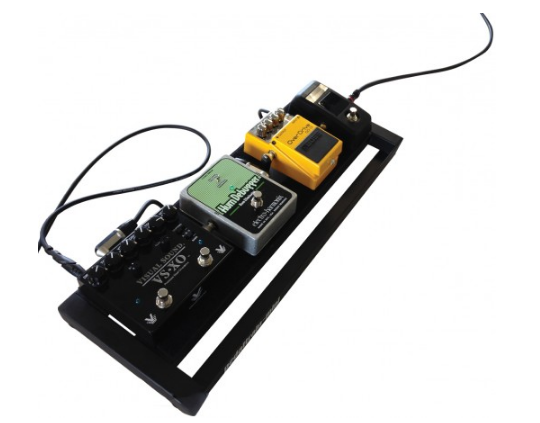Products Category
- FM Transmitter
- 0-50w 50w-1000w 2kw-10kw 10kw+
- TV Transmitter
- 0-50w 50-1kw 2kw-10kw
- FM Antenna
- TV Antenna
- Antenna Accessory
- Cable Connector Power Splitter Dummy Load
- RF Transistor
- Power Supply
- Audio Equipments
- DTV Front End Equipment
- Link System
- STL system Microwave Link system
- FM Radio
- Power Meter
- Other Products
- Special for Coronavirus
Products Tags
Fmuser Sites
- es.fmuser.net
- it.fmuser.net
- fr.fmuser.net
- de.fmuser.net
- af.fmuser.net ->Afrikaans
- sq.fmuser.net ->Albanian
- ar.fmuser.net ->Arabic
- hy.fmuser.net ->Armenian
- az.fmuser.net ->Azerbaijani
- eu.fmuser.net ->Basque
- be.fmuser.net ->Belarusian
- bg.fmuser.net ->Bulgarian
- ca.fmuser.net ->Catalan
- zh-CN.fmuser.net ->Chinese (Simplified)
- zh-TW.fmuser.net ->Chinese (Traditional)
- hr.fmuser.net ->Croatian
- cs.fmuser.net ->Czech
- da.fmuser.net ->Danish
- nl.fmuser.net ->Dutch
- et.fmuser.net ->Estonian
- tl.fmuser.net ->Filipino
- fi.fmuser.net ->Finnish
- fr.fmuser.net ->French
- gl.fmuser.net ->Galician
- ka.fmuser.net ->Georgian
- de.fmuser.net ->German
- el.fmuser.net ->Greek
- ht.fmuser.net ->Haitian Creole
- iw.fmuser.net ->Hebrew
- hi.fmuser.net ->Hindi
- hu.fmuser.net ->Hungarian
- is.fmuser.net ->Icelandic
- id.fmuser.net ->Indonesian
- ga.fmuser.net ->Irish
- it.fmuser.net ->Italian
- ja.fmuser.net ->Japanese
- ko.fmuser.net ->Korean
- lv.fmuser.net ->Latvian
- lt.fmuser.net ->Lithuanian
- mk.fmuser.net ->Macedonian
- ms.fmuser.net ->Malay
- mt.fmuser.net ->Maltese
- no.fmuser.net ->Norwegian
- fa.fmuser.net ->Persian
- pl.fmuser.net ->Polish
- pt.fmuser.net ->Portuguese
- ro.fmuser.net ->Romanian
- ru.fmuser.net ->Russian
- sr.fmuser.net ->Serbian
- sk.fmuser.net ->Slovak
- sl.fmuser.net ->Slovenian
- es.fmuser.net ->Spanish
- sw.fmuser.net ->Swahili
- sv.fmuser.net ->Swedish
- th.fmuser.net ->Thai
- tr.fmuser.net ->Turkish
- uk.fmuser.net ->Ukrainian
- ur.fmuser.net ->Urdu
- vi.fmuser.net ->Vietnamese
- cy.fmuser.net ->Welsh
- yi.fmuser.net ->Yiddish
How To Troubleshoot Your Signal Path; Part 2
Date:2020/3/5 15:49:42 Hits:

Part one was a mental checklist for signal-path triage, designed help get you out of a gig emergency; part two goes beyond the more obvious points into a diagnosis of more serious signal-path ailments. If you’ve already answered the questions in part one and are still experiencing issues, these steps will help resolve them.
1. Trace signal to the last point of connectivity; assume that it’s a cable’s fault.
See if you can find where the signal is interrupted by listening to and looking for the last evidence of signal.
1a) Is there any noise coming from the amp at all? If no, take the cable at the input of the amp and unplug it from wherever else it’s plugged in to. Holding it by the cable only, touch the loose end of the cable at the plug with your thumb and forefinger and listen for an audible difference in the sound of whatever hum you’re hearing. If there is no change in sound, the cable is faulty. If there is a change in sound, wiggle the cable around and try to make the change in sound stop or intermittently interrupt. If you can, the cable is faulty. If the sound doesn’t change, the cable is fine. Plug in your guitar and double-check by playing a chord. Working backward in this fashion, adding one element and cable at a time back into the chain, will lead you to the source or sources of the problem. This will require extensive dis-assembling of your pedalboard and/or rack but will ultimately be worth it.
1b) Another way to test the last point of connectivity is with everything plugged-in and activated that is supposed to be working, look for input-level lights and meters. Is the signal making it to your tuner? When you activate a pedal, particularly a boost or gain pedal, do you hear extra hiss or a pop? Do you hear the pulsing or swirling of your modulation pedal when it’s engaged? You can combine this guitar-down investigation method with the above mentioned amp-back method and hopefully trace the problem to somewhere in the center and not have to tear-apart your entire rig. If you have an effects loop or effects in a side-chain arrangement, unplug those as well and test them individually.
2. If there is no sound coming from your amp at all…
Check the simpler things first: power cable, fuse, speaker plug and connections, loose or unlit tubes, loose input and output jacks, or faulty potentiometers. Test these carefully and individually; if any of this is out of your comfort zone, find a qualified repairman. If these items check out, you probably have a bigger problem with your amp and need a repairman anyway.
3. It could be your instrument!
This wouldn’t be the first time a guitar stopped working; pickups, pots, wires, and jack all can stop functioning properly without warning or provocation. I’ve had an acoustic guitar endpin jack fail and have to be totally replaced; working one minute and not the next.
4. Could it be a device failure?
Pedals, effects, rack-mounted-whatevers, modelers, simulators, and anything with a little computer inside can take a nose-dive. In the big rack days, I had one side of a stereo multi-effect completely stop functioning right before a show. Once I figured it out, I unplugged it and played the show with one less stereo wash. The show must go on!
This 2-part list should keep you from overlooking some of the common causes of signal path interruption and failure. As frustrating as it can be, applying common sense and thorough investigation to the process should take care of the common signal path ills.
Leave a message
Message List
Comments Loading...





